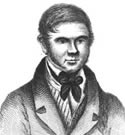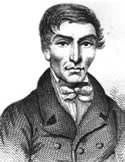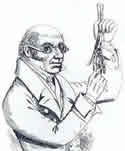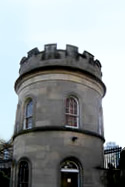Burke and HareWilliam Burke and William Hare were two Irish immigrants who scratched up 17 victims in Edinburgh over the years 1827 and 1829. What became known as the ‘West Port Murders’ made them the most famous body snatchers Scotland has ever seen. William Hare emigrated from Northern Ireland to the UK and worked along with many other Irish immigrants on the Union Canal before moving to Edinburgh where he ran a lodging house. William Burke was born in Urney, County Tyrone in 1792 and moved to Scotland around 1815. He also found work as a navvy on the Union Canal, where it is suspected the two may have at first met. Edinburgh was then, as it is now, renowned for its spearheading of medical science. Unfortunately the cadavers needed for research were in short supply in the early 1800’s, and fewer than five corpses were allocated to the Edinburgh Medical College for medical research each year. This led to a doctor at Edinburgh College – Robert Knox paying for illegally exhumed corpses, and body snatching flourished. It became so reviled among ordinary Edinburgh residents that recently buried relatives would be watched over 24 hours a day until such time that the body was decomposed enough to be no use to the body snatchers. High walls and watchtowers were even constructed around many of Edinburgh’s graveyards, such as St Cuthberts at the top of King stables Road. Burke and Hare crossed paths in late 1827 when William Burke became resident at Hare’s lodging house on Tanners Close on the west side of Edinburgh. William Hare would later testify that the episode began when together they sold the body of a deceased resident of the lodging house to Doctor Robert Knox, in order they said to reclaim money owed by the deceased. Seeing an opportunity to make money, and spurred on by the requirements of Robert Knox, Burke and Hare no longer waited for their victims to die of natural causes. They first preyed upon tenants of the boarding house before moving on to prostitutes and strangers on the streets of Edinburgh. They developed a trademark method of suffocation which would later become known as ‘Burking’. The crimes were eventually detected when a body was found under the bed of William Burke. A bribe of £10 per week was attempted to keep the witness quiet but refused. William Hare was granted immunity in return for testifying against burke, who was found guilty and executed in Edinburgh by hanging on January 28th 1829. He was then publicly dissected at Edinburgh Medical College and his skeleton remains on display at the college museum. Perhaps more gruesomely, a book was made from his skin, and can be viewed to this day in the police museum on The Royal Mile in Edinburgh. Hare fled to England and the last reported sighting of him was some years later in Carlisle. Dr Robert Knox was never prosecuted as it could not be proven that he knew the corpses he bought were murder victims. He died in London in 1862 after moving there to work at a cancer hospital. The Burke and Hare Murders (or West Port Murders), became a catalyst for changes to the way cadavers were provided for medical science. The supply was increased via the new 1832 Anatomy Act to combat the trade in corpses across Edinburgh, Scotland and Britain as a whole.
Written by Shaun Flanagan |
|
||||||||



